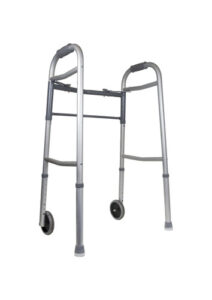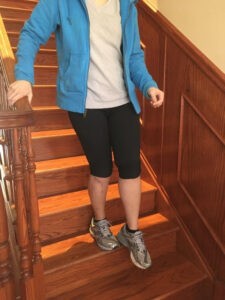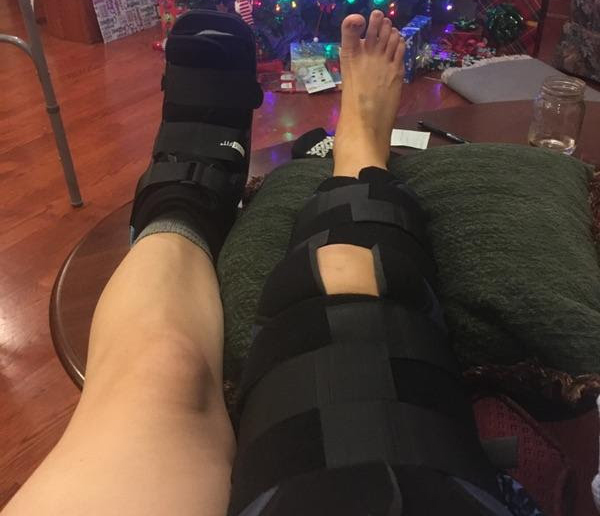Did You Ever … Break a Leg?
Sometimes our clients tell it best …
A freak fall got this mom surgery and weeks off of her feet
A client who sees us annually for a tune-up let us know she had fallen before the holidays. The freak fall fractured her lower right leg (tibia) and left foot, requiring surgery to repair her leg.
She has been doing the recommended rehab to regain strength and mobility. Although getting stronger, she felt like her foot was disconnected and unstable. Her knee was weak, and her balance was a little scary. Her walker was a constant companion. Her physical therapist told her moving more will help; it wasn’t.
Once healed and cleared to bear weight on her leg, she made it into our office hobbling along with her walker. In that visit we were able to help her put stabilization skills back together. (Stabilization is a background layer of function that provides control.) Her recovery took a huge jump forward.
The following email updates from her were a great way to start the week!
 Her email update came three days after her appointment which was eight weeks after surgery for her fractured leg (tibia).
Her email update came three days after her appointment which was eight weeks after surgery for her fractured leg (tibia).
“Such an improvement since Thursday! No walker all day today! It feels fantastic!
Feeling infinitely more steady. Swelling and pain are greatly reduced. Muscles were sore Friday and yesterday, as expected, but today I am walking around without the walker! I didn’t even need to use it when I first got out of bed! Until now I had been so stiff and in so much pain that I really had to lean heavily on the walker to make it to the kitchen for breakfast and get the Tylenol to kick in.
The leg seems lighter and has better reaction times as I do my stretching and strengthening moves. The better balance and stability in my movements is incredible. I was able to move about the kitchen and make my own lunch with both hands free to cook and carry things. I got up and down the stairs twice, which is a first.
The work you do is valuable beyond words. Thanks again. It’s life changing.”
The next morning, another email …

“The Physical Therapist was amazed at how much better I did today. I went and came back entirely without the walker. Double the time (10 whole minutes) on the treadmill at a faster speed. Then we did exercises on the Pilates machines for the first time. It was a hard, but good, workout.
She was so impressed that she took your information and said she was going to look at your website to learn more. She says she’s always got an open mind to techniques that are non-invasive ways to help when the usual techniques aren’t working like she thinks they should.
So things are really looking up here. I have been cleared to go out for groceries, as the cart pusher, so I may see you out and about.”
One week later… “It’s been just under a week since I saw you, but this morning the PT advanced me to balance and stability exercises (since I had progressed so rapidly with strength and flexibility while having only minimal pain.) I would never have been able to do these moves a week ago before you helped reconnect everything.”
Cindy D.
How did just one session make such a difference?
Sometimes the simplest movement relationships can make all the difference!
These are the basic relationships that we supported and matched for our client, making one visit so impactful:
- Matching the inner and outer sides of her knee
- Matching the inner and outer sides of how her ankle connected to her knee
- Supporting the knee and ankle as they transitioned through their other job — stabilizing the leg. This is a key! Most strengthening and stretching protocols overlook that a joint has to be stable too.
- Matching the broken leg to the other leg (which had a foot fracture). Each leg had been compensating in different ways.
Wondering if Bridging can help you?
When you have a broken leg (or other body part) let Kinetic Konnections be your next stop. We are able to quickly restore the joint coordination for moving and stabilizing your limbs and core. The process also finds and clears your compensations from the injury and recovery period.
Often in one or two sessions our use of the Bridging Technique’s gentle rocking movements restores your movement in the impacted area. You feel better, and often the area looks better! Less swelling, better movement, and more complete recovery.

